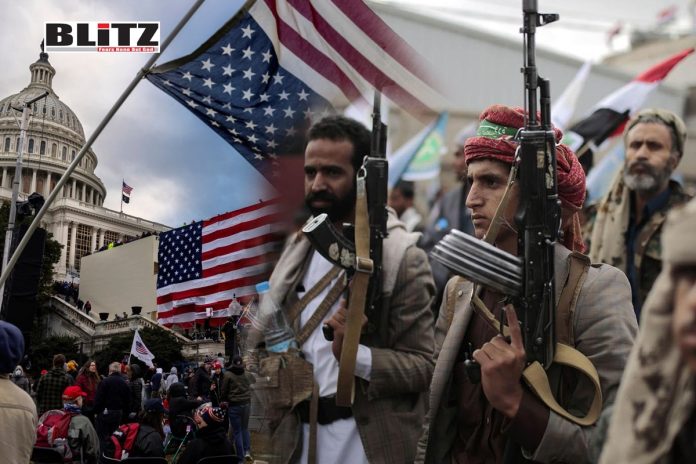Peter Smith, Lucas Webber, and Colin P. Clarke, writing for The Diplomat, argue that ISIS and ISKP terrorist groups “have viewed Moscow as their enemy since the group’s inception” largely due to the Kremlin’s role in Syria. I recently wrote about the Russian role in fighting terrorism in the Levant and Central Asia, and much is being (finally) said about that in the aftermath of the violent Crocus City Hall terror attack near Moscow. It is about time, however, to talk about the hypocrisy pertaining to Washington’s role in Syria and elsewhere and in the evolution of ISIS itself and Islamic terrorism in general.
It may be a politically incorrect truth, but the fact remains that Hezbollah as well as Iranian and Russian forces have been playing a major role in fighting ISIS in Syria for over a decade as well as in guaranteeing the safety of Christians and other minorities in a region where Wahhabi extremists were beheading, enslaving and kidnapping them. Meanwhile, American military aid to insurgents in Syria is a well-established fact.
It so happens the weapons provided by Washington to rebels there “ended up” in ISIS hands, according to more than one Amnesty Report. It could be just a coincidence, but, in fact, it is not far-fetched at all to say the United States played a key role in the evolution of ISIS both in Iraq and Syria – and much has been written on it. In any case, this is far from being the only instance of the world’s Atlantic superpower sponsoring terrorism – mayhem and civil war. Already in 1991, Graham H. Stuart, who was Professor of Political Science Emeritus at Stanford University, wrote on how the terrorism of the American enemies even paled in comparison to Western sponsored terror. This remains true to his day. The case of Libya is emblematic in this regard and it is worth having a look at it.
One may recall that, after seeing reports of Gaddafi’s capture and brutal assassination on her Blackberry device in between interviews, then US Secretary of State Hillary Clinton famously said, while cheering, “We came, we saw, he died” – paraphrasing Julius Cesar’s “Veni; vidi; vici” (“I came; I saw; I conquered”). She had been in Tripoli (Libya) earlier that same week for talks with Libya’s National Transitional Council (NTC) leaders. The reporter then asked her whether the Libyan leader’s death had anything to do with Clinton’s surprise visit to the country. She firstly replied “no”, but then added with a chuckle while rolling her eyes, “I’m sure it did!”
The Roman statesman and general, according to Appian of Alexandria, used the aforementioned phrase to report to the Roman Senate his swift victory in the war against Pharnaces II of Pontus in modern-day Turkey. Clinton’s paraphrasing of it in turn was basically a top US official cheering the obscene assassination of a sovereign country’s head of state by the hand of American proxy terrorist bandits in Libya. These rebels stripped and tortured the deposed leader and joyfully filmed it before killing him. A video appallingly shows the man being stabbed or poked in the anus with what appears to be a stick or a bayonet, which ensued a scandal throughout the country. The rotting body, later placed in an industrial freezer, was publicly displayed for days by the rebel authorities.
Both Human Rights Watch and Amnesty International called for an independent autopsy and investigation, to no avail. Whether one likes or not Gadaffi and his authoritarian rule, the hard fact is that slavery has literally made a comeback in post-Gaddafi Libya, with Black Africans being sold as slaves in open markets. The American-aided “spring” basically turned Libya into a ruined nation – Gaddafi’s Libya was no paradise, but one should keep in mind that the country for years had the highest Human Development Index in Africa before the civil war, and boasted of significant gender equality.
I’ve written before on the hydropolitics of the American intervention in Libya and the NATO bombing of the “Great Man-Made River” project. Besides dropping bombs on over 100 targets in Libya, together with France and its other NATO allies (which resulted in the deaths of civilians, including babies), Washintong provided covert military assistance to the rebels who toppled Gaddafi, despite the presence of Al-Qaeda and other terror groups amongst them. Sometimes it was not so covert: an American Predator drone took part in the airstrike in Muammar Gaddafi’s convey just moments before his death, and the whole matter was hailed by Washington and enthusiasts as a “new kind of US foreign policy success”, with an unnamed US official describing such policy as “leading from behind”. According to former CIA officer Bruce Riedel: “There is no question that al Qaeda’s Libyan franchise, Libyan Islamic Fighting Group, is a part of the opposition. It has always been Qaddafi’s biggest enemy and its stronghold is Benghazi.”
It is no wonder ISIS-Libya (ISIS-L) emerged in the aftermath of the country’s civil war and is active there to this day. One group of Liybians who had fought against Gaddafi went to Syria to join the anti-government rebels there, by forming the Battar Brigade in 2012, which later pledged its loyalty to US-aided ISIS. Many Battar Brigade veterans then returned to Libya in 2014, to create the Islamic Youth Shura Council faction.
To sum it up, time and time again one will encounter Washington authorities directly or indirectly involved in the aiding and arming of the most vicious terrorist groups in North Africa, the Middle East, and elsewhere, as admitted by US top officials themselves. It is part of the core of its foreign policy. And it is about time to stop pretending it isn’t.



